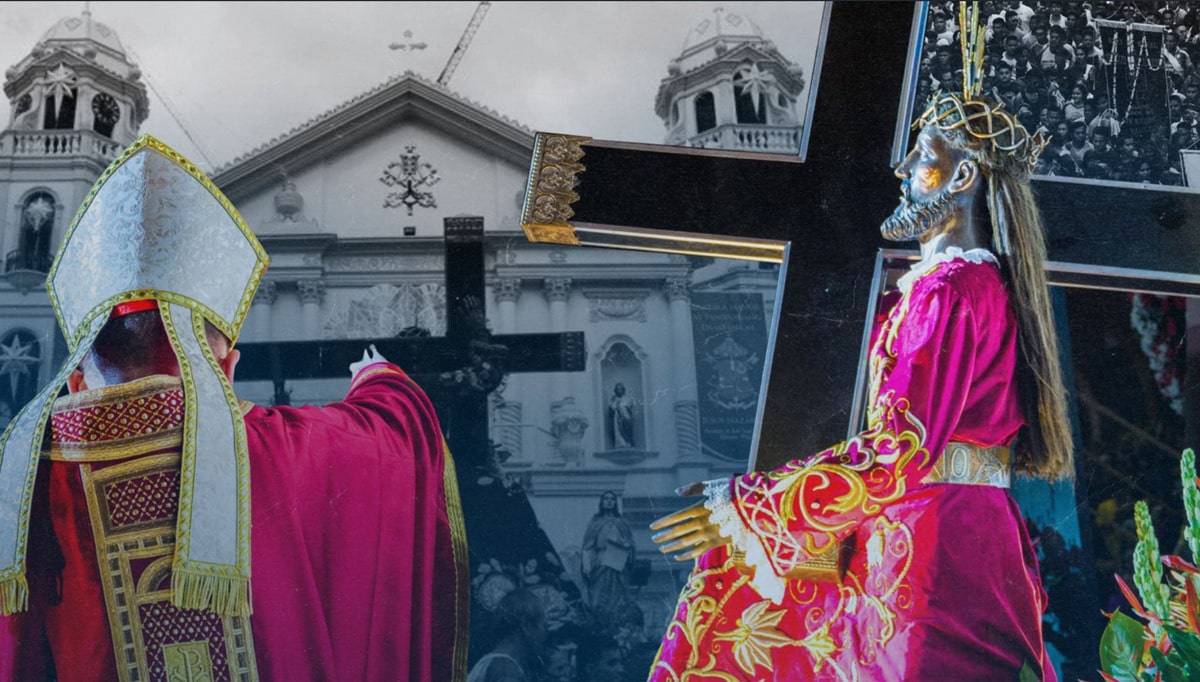MANILA, Philippines—It was in 1606 when the Augustinian Recollects brought from Mexico a dark image of Christ that would later draw millions of people every Jan. 9 in the Philippines, when the image is brought out for public viewing and the traslacion.
The traslacion, which will be celebrated in all dioceses across the Philippines starting this year, commemorates the transfer of the centuries-old image from Bagumbayan to its present church in Quiapo, Manila.
Famous for the spectacle of millions of people spilling out into the streets, the Quiapo Church said that the traslacion of the dark image depicting Christ on his way to Calvary is now considered as a “national feast.”
READ: Nazareno 2025 to be celebrated nationwide in ‘historic’ first
It pointed out that the decision by the Catholic Bishops’ Conference of the Philippines to order the celebration of Jan. 9 as a “liturgical feast” all over the country, “is a confirmation to the Filipinos’ ardent love and devotion to Jesus Nazareno.”
But when did the traslacion start?
READ: Nazareno 2025: ‘Pahalik’ starts ahead of schedule
The Quiapo Church said that between 1767 and 1787, the first traslacion took place, when Archbishop Basilio Sancho de Santa Justa y Rufina ordered the transfer of the image to its present shrine.
Back in 1606, the image was first brought at the St. John the Baptist Church in Bagumbayan, but as the devotion grew, the Augustinian Recollects constructed a new church in Intramuros, where the image was eventually transferred.
A cofradia, or a brotherhood of respected men in Manila, was later established. Then in 1650, Pope Innocent X recognized the strong devotion to Jesus Nazareno and authorized the establishment of the cofradia.
Simple procession to ‘sea of people’
A few years after the transfer of the image to the Quiapo Church, Pope Pius VI bestowed his blessing on those who venerate the image. Since then, the procession of Jesus Nazareno drew people from Manila and nearby provinces.
RELATED STORY: Hard questions about Nazareno 2025
But since the image was “miraculously” spared from the ravages of fire and war, too, the devotion grew stronger that it was even blessed by Pope Pius VII and towered at the high altar of the Quiapo Church.
It was only in 2006, however, when Msgr. Josefino Ramirez had the traslacion begin at the Quirino Grandstand, retracing the origins of the image from Bagumbayan to Intramuros and then to Quiapo.
READ: Nazarene feast: What devotees need to know for Traslacion 2025
Then in 2009, the traslacion route was institutionalized by Msgr. Jose Clemente Ignacio, with the Quiapo Church saying that from then on, millions of people would pay homage for the pahalik and Mass and then take part in the procession.
The 400th year since the arrival of the image was celebrated in 2006.
